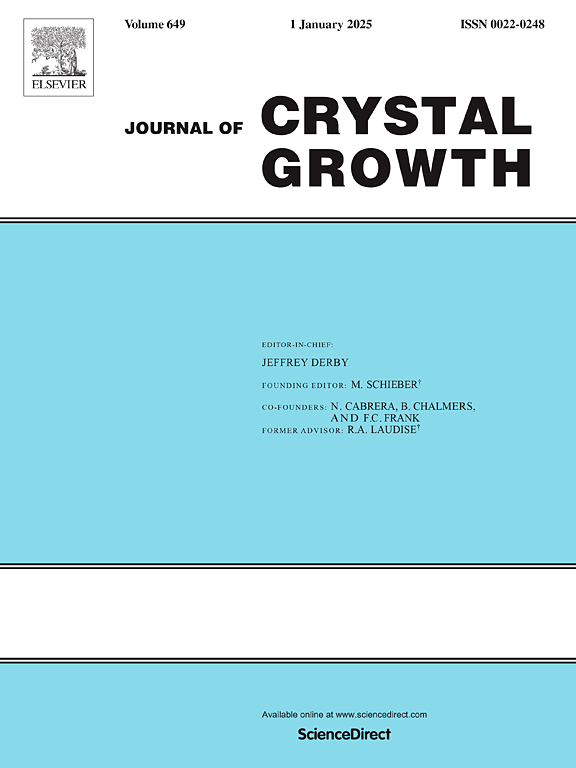In situ XRD study of nano-crystalline NiO formation on Ni-coated carbon fibers: Structural and optical properties
IF 1.7
4区 材料科学
Q3 CRYSTALLOGRAPHY
引用次数: 0
Abstract
The study focused on nickel-coated carbon fibers, where nickel was partially substituted by carbon, forming a compound Ni1-xCx (with x = 0 < x < 1). These modified fibers exhibit excellent surface properties, making them promising for nuclear applications, such as detectors and reflectors. The fibers were subjected to annealing treatments under vacuum and in open air at 500 °C. X-ray diffraction (XRD) analysis revealed that oxidation induces long-range carbon diffusion and results in the formation of a NiO layer on the fiber surfaces. Notably, cubic-type nanostructured NiO (NaCl type) was observed to begin forming at 350 °C. Scanning Electron Microscopy (SEM) showed that the coated fibers exhibit a granular morphology with nanometer-sized grains. Using a 375 nm excitation wavelength, photoluminescence measurements displayed two broad emission peaks. These peaks are likely attributed to electronic transitions involving the 3d electrons of Ni2+ ions. Overall, the work demonstrates that controlled oxidation can tailor the surface properties of these fibers, potentially enhancing their performance in nuclear applications by combining semiconducting and reflective characteristics.
镍包覆碳纤维纳米晶NiO形成的原位XRD研究:结构和光学性质
研究重点是镍涂层碳纤维,其中镍部分被碳取代,形成化合物Ni1-xCx (x = 0 <;x & lt;1). 这些改性纤维表现出优异的表面性能,使其有望用于核应用,如探测器和反射器。纤维在500°C的真空和露天条件下进行退火处理。x射线衍射(XRD)分析表明,氧化诱导了碳的远距离扩散,并在纤维表面形成了NiO层。值得注意的是,立方型纳米结构NiO (NaCl型)在350℃时开始形成。扫描电镜(SEM)显示,包覆后的纤维呈纳米级颗粒状。使用375 nm激发波长,光致发光测量显示两个宽发射峰。这些峰可能归因于涉及Ni2+离子三维电子的电子跃迁。总的来说,这项工作表明,控制氧化可以调整这些纤维的表面特性,通过结合半导体和反射特性,有可能提高它们在核应用中的性能。
本文章由计算机程序翻译,如有差异,请以英文原文为准。
求助全文
约1分钟内获得全文
求助全文
来源期刊

Journal of Crystal Growth
化学-晶体学
CiteScore
3.60
自引率
11.10%
发文量
373
审稿时长
65 days
期刊介绍:
The journal offers a common reference and publication source for workers engaged in research on the experimental and theoretical aspects of crystal growth and its applications, e.g. in devices. Experimental and theoretical contributions are published in the following fields: theory of nucleation and growth, molecular kinetics and transport phenomena, crystallization in viscous media such as polymers and glasses; crystal growth of metals, minerals, semiconductors, superconductors, magnetics, inorganic, organic and biological substances in bulk or as thin films; molecular beam epitaxy, chemical vapor deposition, growth of III-V and II-VI and other semiconductors; characterization of single crystals by physical and chemical methods; apparatus, instrumentation and techniques for crystal growth, and purification methods; multilayer heterostructures and their characterisation with an emphasis on crystal growth and epitaxial aspects of electronic materials. A special feature of the journal is the periodic inclusion of proceedings of symposia and conferences on relevant aspects of crystal growth.
 求助内容:
求助内容: 应助结果提醒方式:
应助结果提醒方式:


